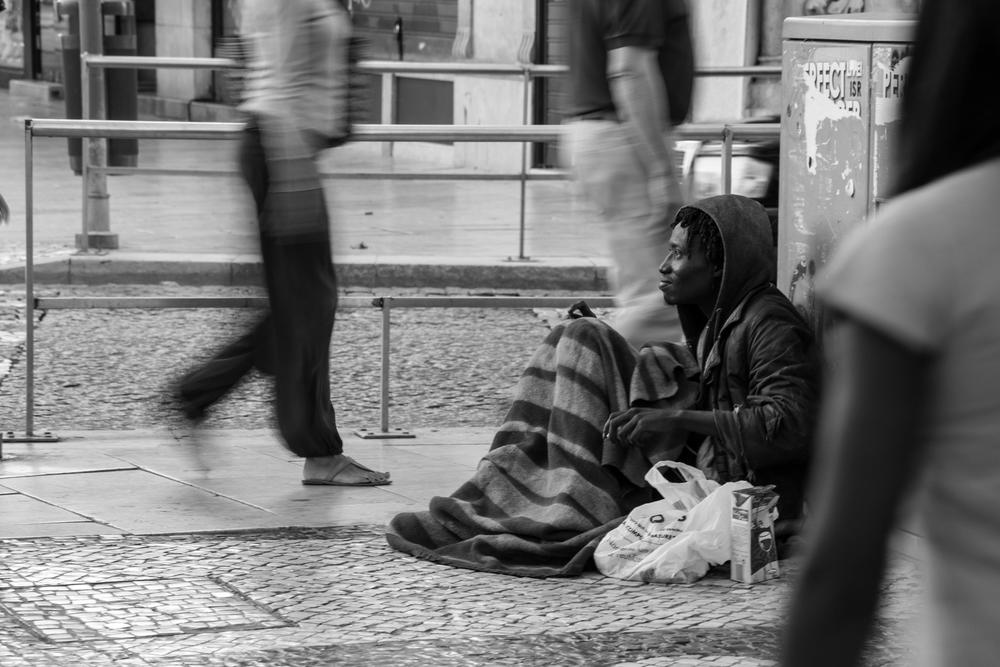Section Branding
Header Content
With Winter Weather Comes Challenge Of Sheltering Homeless
Primary Content
A cold snap hit north Georgia and the Atlanta region this week. With it came windy and chilly temperatures dipping into the upper 30s. Next week, lows are expected to tease freezing levels in the metro region.
In fact, some areas in the northern part of the state received their first dusting of snow. But cold streaks activate more than meteorologists.
“The city of Atlanta announced that it will open an emergency warming shelter in anticipation of frigid temperatures,” read a notification from the mayor’s office.
The shelter, at the Old Adamsville Recreation Center, is on the west end of town, just outside of the perimeter. To transport people experiencing homelessness there, they are told to meet outside of the Gateway Center.
Accessing Warming Shelters
But how are people without stable housing and transportation supposed to find out when shelters are opening and where to go to get there?
That falls on outreach teams. People responsible for getting in contact with the homeless and letting them know what services are available.
“The city and others have been putting in more funds to try to expand outreach,” Gateway CEO Raphael Holloway said. “I think that there is still a need. That is not from a lack of anyone ignoring that we have a growing problem.”
Up in Whitfield County and Dalton, the government doesn’t operate any type of warming shelter; instead, they rely solely on nonprofit outreach services.
In Rome, a white flag climbs to the top of a pole outside the Salvation Army center, letting people know it can be used for a warming center.
There has been progress to make sure people experiencing homelessness have a warm place to go during the winter months. In 2018, Atlanta Mayor Keisha Lance Bottoms raised the temperature to open emergency warming shelters from 25 to 32 degrees.
At Gateway, it’s even higher.
“We made the decision to open our doors when the temperature is 40 degrees or lower, and that’s at wind chill of 40 degrees,” Holloway said.
GSU Study: Majority Of Homeless Youth In Atlanta Experience Human Trafficking
Service Outreach
One problem that Holloway said outreach teams do run into is service resistance.
“I think because of the fatigue or in some cases frustration that has been experienced with having tried this system before, we have to rebuild trust,” he said.
It’s something that Kathy Hart, the lead caseworker for the Salvation Army in Rome, said they experience too.
“Trust doesn’t come overnight,” Hart said. “But seeing the same faces on a weekly basis and asking individuals what they need or want is how you build it.”
MORE: New 'Dignity Museum' Combats The Stigmas Of Homelessness And Poverty
She said they send out buses at the start of each week to trail heads and places where people may be staying to pass out blankets, coats, hand warmers and other supplies.
At Gateway, they offer free services with the hope that when people come in to use the restroom or a locker, the center can make them aware of other services they offer. Sometimes it can take more than 10 interactions to get a person to feel comfortable enough to use the services.
As homelessness rises around the state and people continue to experience it around Atlanta, though the rate is dropping, Holloway said solutions will come down to what happens in the months when an emergency warming shelter isn’t needed.
He said instead of being reactive once temps drop and just focusing on how to get people off the street, it’s important to look at what factors keep leading to people becoming homeless.
RELATED: Atlanta Unemployment Rate Reaches Low While Many Work Multiple Jobs
Lack of Affordable Housing
One of those issues is affordable housing. Until that is fixed, people will keep dangling above the funnel of homelessness, he said.
Even in Rome, Hart said that’s a big issue.
“To get someone out of a shelter without coming alongside them and doing supportive housing just doesn’t work,” she said.
She said right now people default to extended stays and hotels, which is a step up from sleeping outside but it’s a hard hole to get out of.
Another factor that could help with outreach, is relying on the community and defeating the stigma of how a homeless person may have ended up in their situation.
“How do we maybe better inform the community?” Holloway said. “So, as they approach people they then know how to refer them to a network? I think when people are engaging people experience homelessness, they aren’t equipped to know what to tell them.”
Holloway said it comes down to education and what’s being done outside of December to February. And whether it’s in Rome or Atlanta or farther south, advocates said there needs to be a marked investment in addressing the issue by government.


